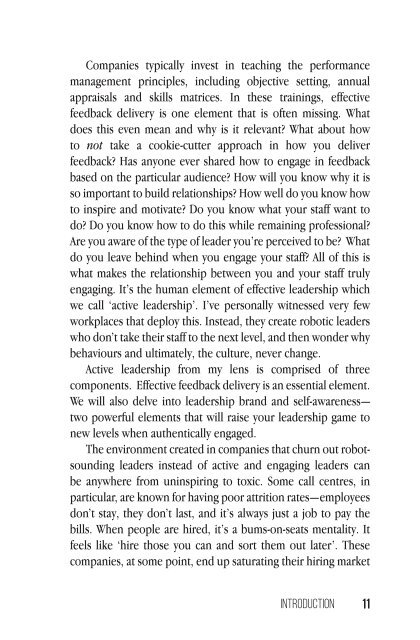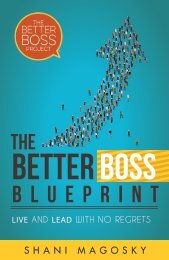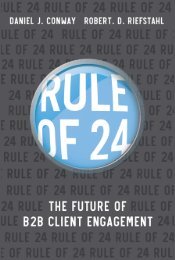The Ego ContinuumSAMPLE
Create successful ePaper yourself
Turn your PDF publications into a flip-book with our unique Google optimized e-Paper software.
Companies typically invest in teaching the performance<br />
management principles, including objective setting, annual<br />
appraisals and skills matrices. In these trainings, effective<br />
feedback delivery is one element that is often missing. What<br />
does this even mean and why is it relevant? What about how<br />
to not take a cookie-cutter approach in how you deliver<br />
feedback? Has anyone ever shared how to engage in feedback<br />
based on the particular audience? How will you know why it is<br />
so important to build relationships? How well do you know how<br />
to inspire and motivate? Do you know what your staff want to<br />
do? Do you know how to do this while remaining professional?<br />
Are you aware of the type of leader you’re perceived to be? What<br />
do you leave behind when you engage your staff? All of this is<br />
what makes the relationship between you and your staff truly<br />
engaging. It’s the human element of effective leadership which<br />
we call ‘active leadership’. I’ve personally witnessed very few<br />
workplaces that deploy this. Instead, they create robotic leaders<br />
who don’t take their staff to the next level, and then wonder why<br />
behaviours and ultimately, the culture, never change.<br />
Active leadership from my lens is comprised of three<br />
components. Effective feedback delivery is an essential element.<br />
We will also delve into leadership brand and self-awareness—<br />
two powerful elements that will raise your leadership game to<br />
new levels when authentically engaged.<br />
<strong>The</strong> environment created in companies that churn out robotsounding<br />
leaders instead of active and engaging leaders can<br />
be anywhere from uninspiring to toxic. Some call centres, in<br />
particular, are known for having poor attrition rates—employees<br />
don’t stay, they don’t last, and it’s always just a job to pay the<br />
bills. When people are hired, it’s a bums-on-seats mentality. It<br />
feels like ‘hire those you can and sort them out later’. <strong>The</strong>se<br />
companies, at some point, end up saturating their hiring market<br />
Introduction 11








